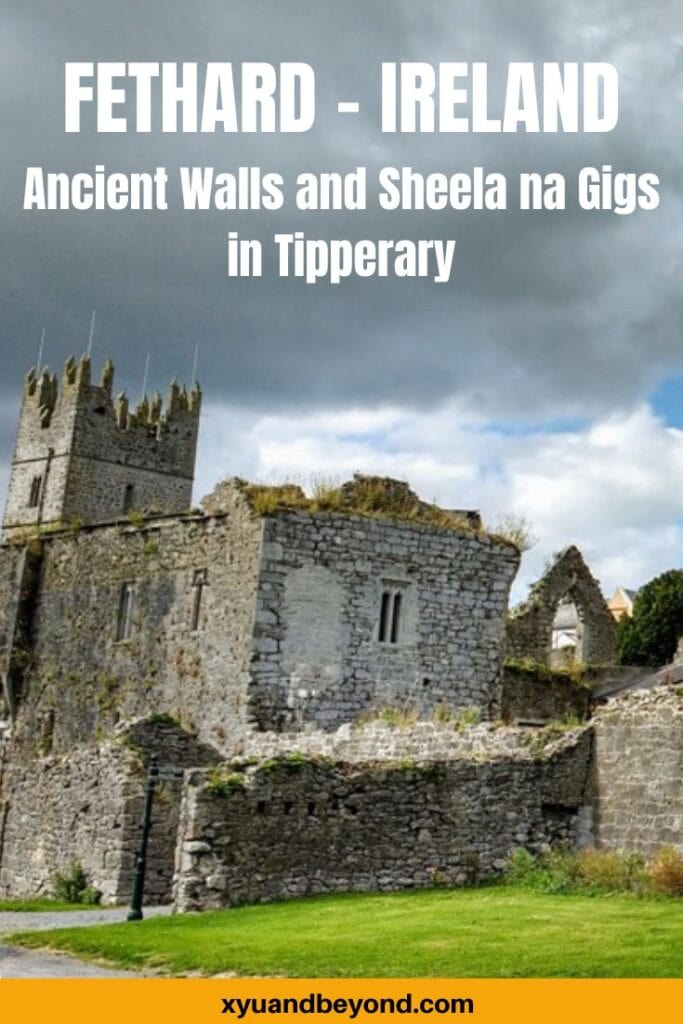Fethard: Ancient Walls and Sheela na Gigs in Tipperary
We stumbled upon Fethard just driving around Tipperary one day. We had been to visit the Rock of Cashel and Holy Cross Abbey and were headed back to our housesitting gig when we came across this amazing medieval-looking village which of course turned out to be Fethard which is an ancient medieval hidden gem of Ireland.
The first thing you see is the ancient town walls of Fethard. This is one of medieval Ireland’s best preserved Norman towns. Some ninety per cent of its town wall is intact, and three gates remain.
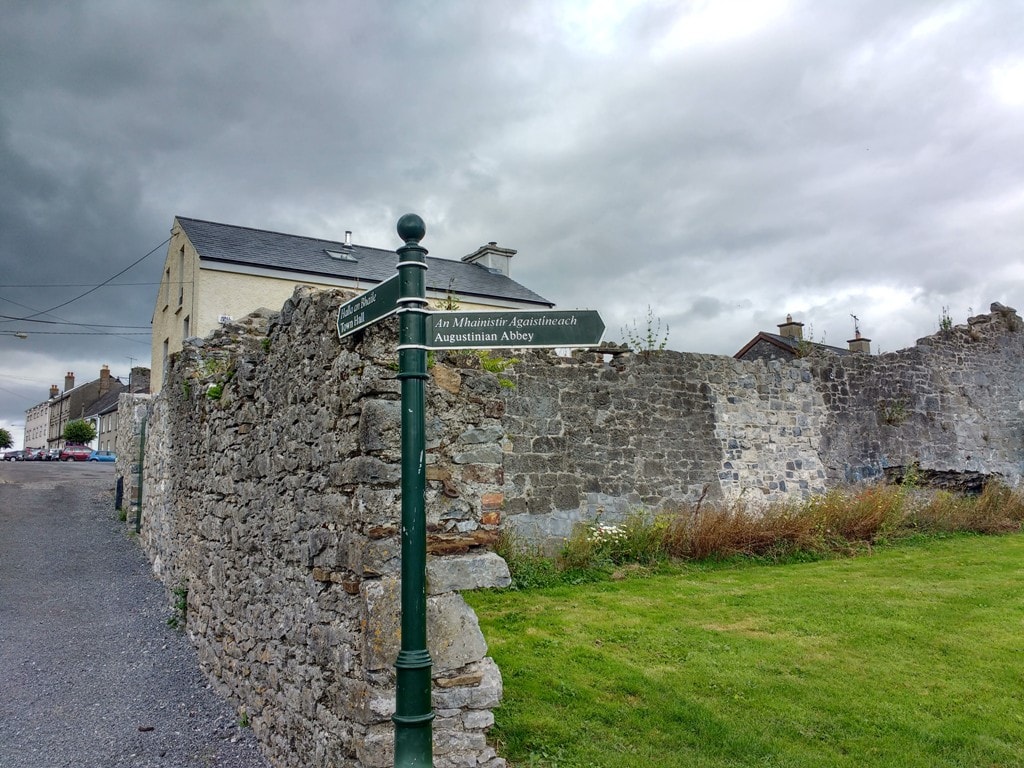
Planning a dream trip to Ireland? Everything you need to know
For a small, quiet town fording the Clashawley River Fethard boasts a huge number of medieval ruins. A good portion of its original 14th-century town walls remain intact, and its 2km heritage trail takes about an hour to complete.
Located around 16km from Cashel and getting very little tourist attention Fethard is a lovely place to explore some of Ireland’s history and track down the three Sheela na Gigs around the town as well as visit Holy Trinity Church, one of the country’s best preserved medieval churches, and some 15th-century medieval town houses one of which has been reconstructed and a medieval stone bridge.
History of Fethard
Fethard in Irish is Fiodh Ard, and it means high wood. The town’s walls were laid out in the 13th century.
Fethard was founded in the early 13th century during the Norman invasion of Ireland. The first settlement is believed to have been established by William de Braose 7th Baron of Abergavenny (Wales) who settled here in 1201.
Thanks to brigands and outlaws on the roads around Fethard the defensive walls were built back in 1292. At the time the King demanded taxes or levies against the items being sold in the market of Fethard which would go to the building of the walls.
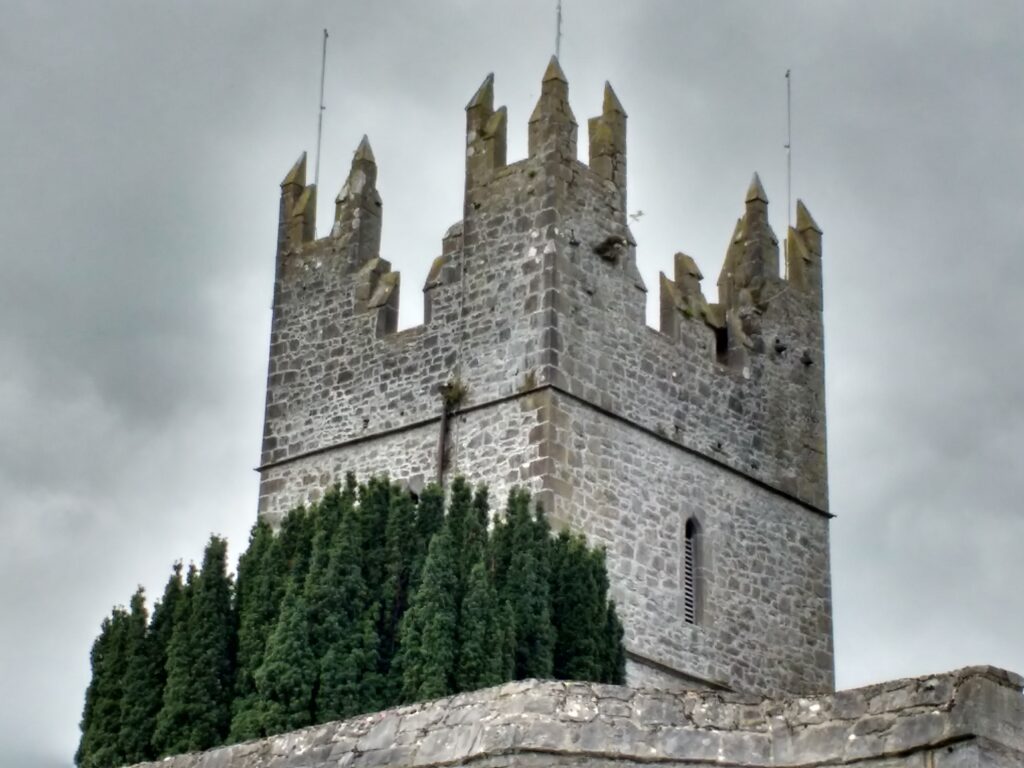
Historians believe that the original walls were built of timber and earth because in 1375 records show that stone walls had to be built to replace the earthworks and wood ones.
William de Braose had a falling out with King John who then granted Fethard to the Archbishops of Cashel where it remained in their hands until the 16th century. At the start of the 14th century, an Augustinian Friary was established just outside the town.
In 1328, King Edward III of England granted the 1st Earl of Ormond James Butler the right to administer Tipperary which allowed the Butlers to rule over the entire country of Tipperary. The Ormond dynasty ruled over the region for 400 years and was finally abolished in 1715.
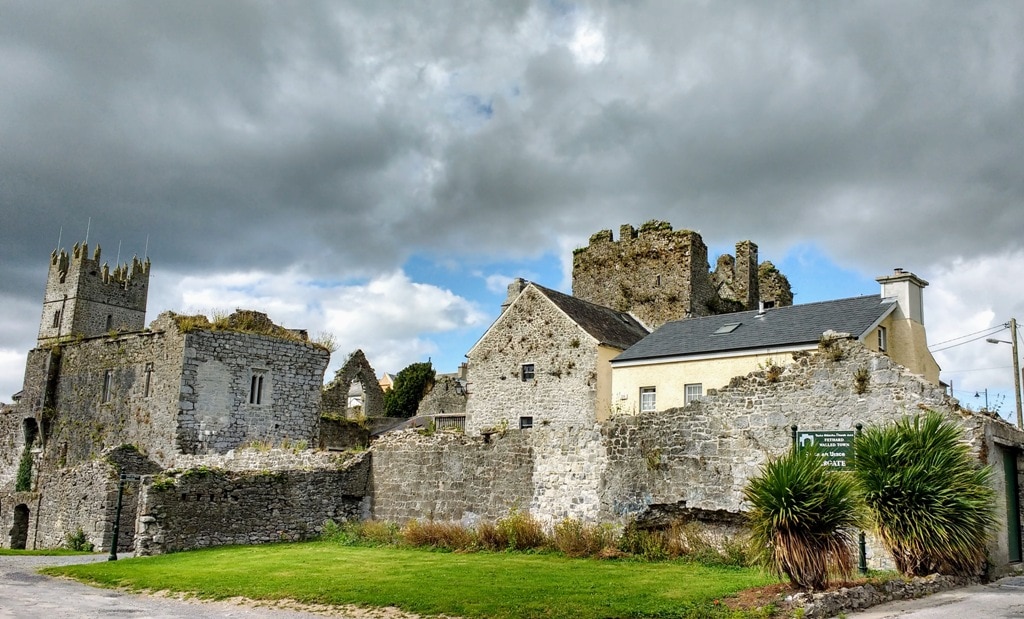
In 1552 the town of Fethard (and all towns in Tipperary) were granted the power to look after their own affairs without any involvement from the Crown. The family that led this move were the Everards of Fethard. The towns paid an annual fee to the King.
Following the Irish Rebellion of 1641, most of Ireland was under the control of the Irish Catholic Federation. In England in the meantime by 1649 the Civil War between the Royalists and the Parliamentarians had broken out.
At the end of January 1650, Cromwell began the conquest of southern Ireland. He offered terms of surrender at the city of Fethard on February 2. Officers, soldiers and priests would be allowed to march away, and the townspeople would be protected from looting.
Cromwell’s armies had slaughtered thousands of Irish civilians and had taken Cashel, which had determined Fethard’s decision to surrender. This is why the main structures and buildings in Fethard including the walls, church, and houses survived unharmed.
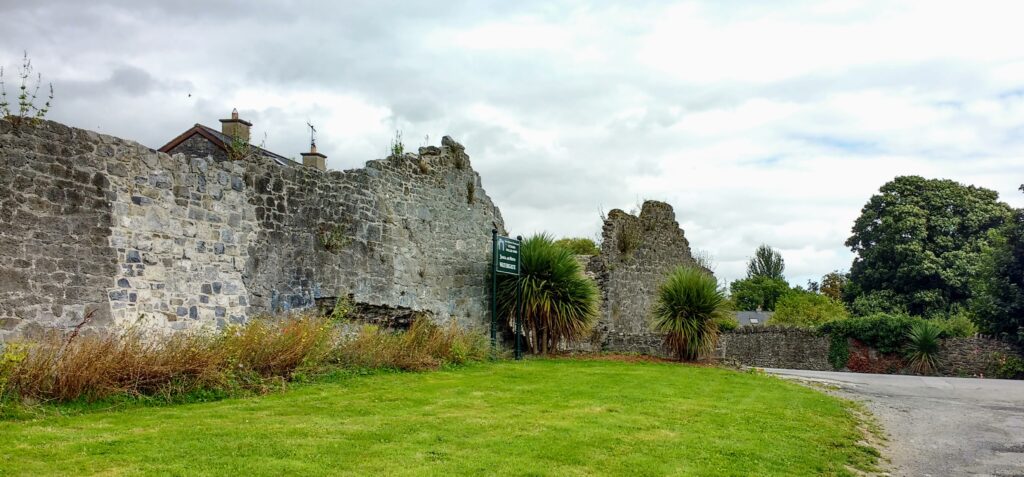
Today, despite featuring some of the most important medieval heritage in Ireland, Fethard is a quiet little country town but it is worth a visit due to the incredible preservation of its medieval heritage.
53 Ultimate Ireland travel tips
What to see in Fethard
The town is a very quiet little place and most definitely off the beaten path of Irish tourism sites. If you are in Cashel, Cahir or Clonmel drop by the tourist office and ask about the guided tours of Fethard. These walking tours are delivered by locals many of whom are descended from the town’s medieval villagers.
We recommend following the heritage trail around the town. The walk takes you through the village streets and then back along the river past all these sights in just under an hour if you walk at a leisurely pace.
Here are a few things to look for in Fethard when you visit.
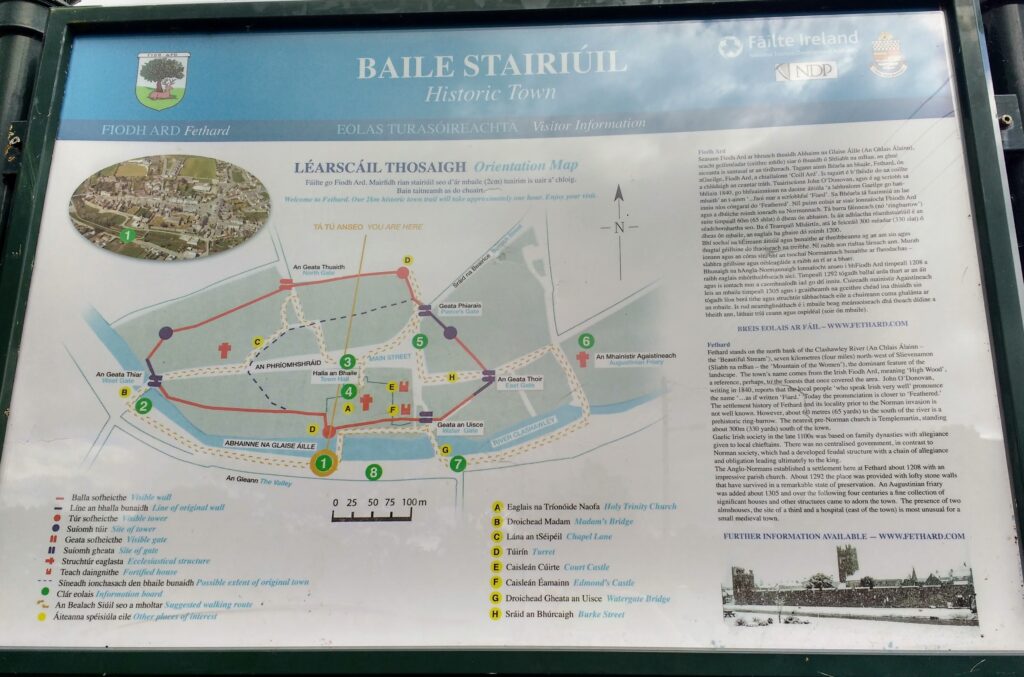
Fethard Heritage Trail
You can follow the trail map below and take the Heritage walk around town. The walk will take around an hour or so through the town’s little streets, along the banks of the river and past the significant sites along the walls.
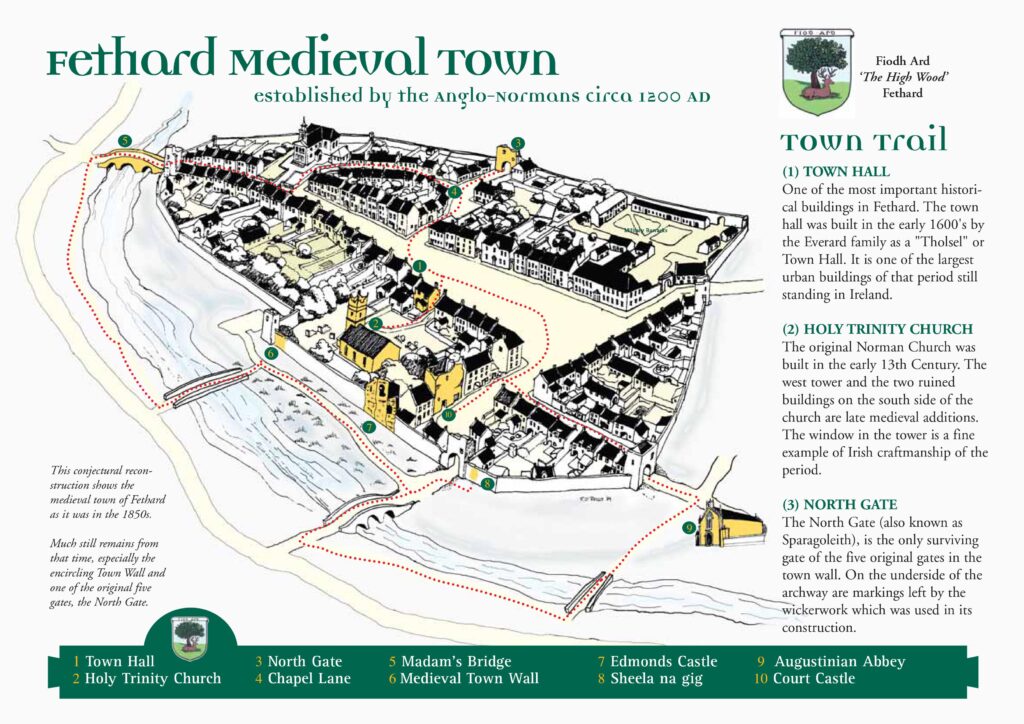
Holy Trinity Priory – Fethard Augustinian Abbey
The Augustinian Abbey was founded in c.1306 on land granted to them by Walter Mulcote. The friars remained at Fethard until the dissolution of the monastery in 1540. All that remains of the complex today is a multi-period structure that was substantially rebuilt as a Catholic Church in 1823, shortly after the friars returned to Fethard.
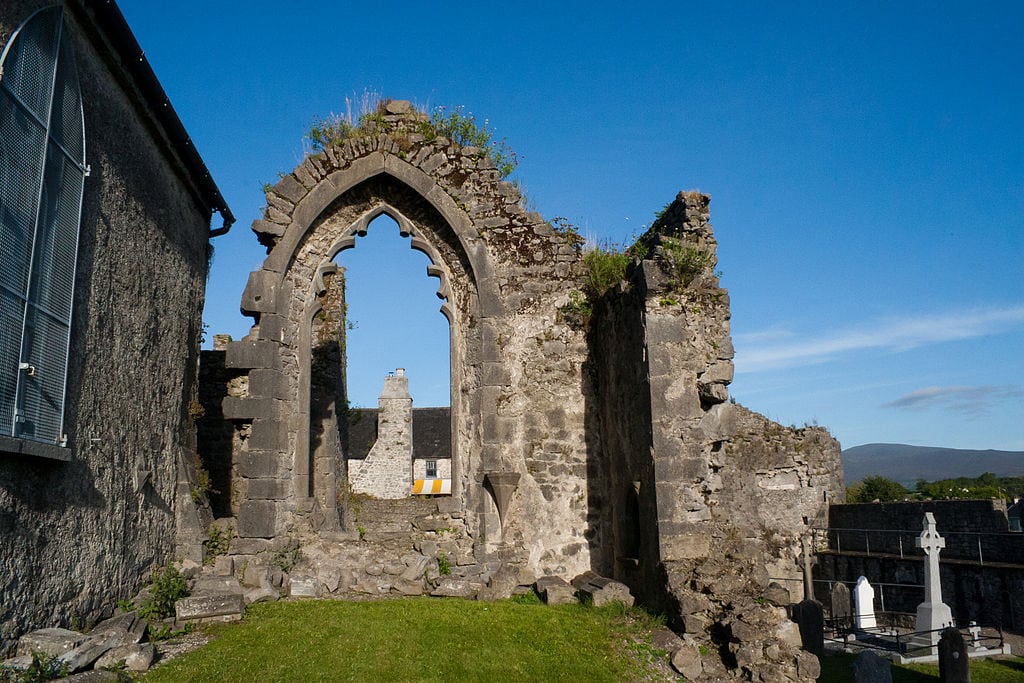
Sheela Na Gigs
The enigma of Sheela Na Gigs, these are medieval sculptures of a naked female with the legs wide apart and the hands emphasizing the genitals, found in churches in Britain and Ireland. Even the name of them is a mystery, one theory is that ‘sheela’ means crone and that ‘gig’ was slang for genitals.
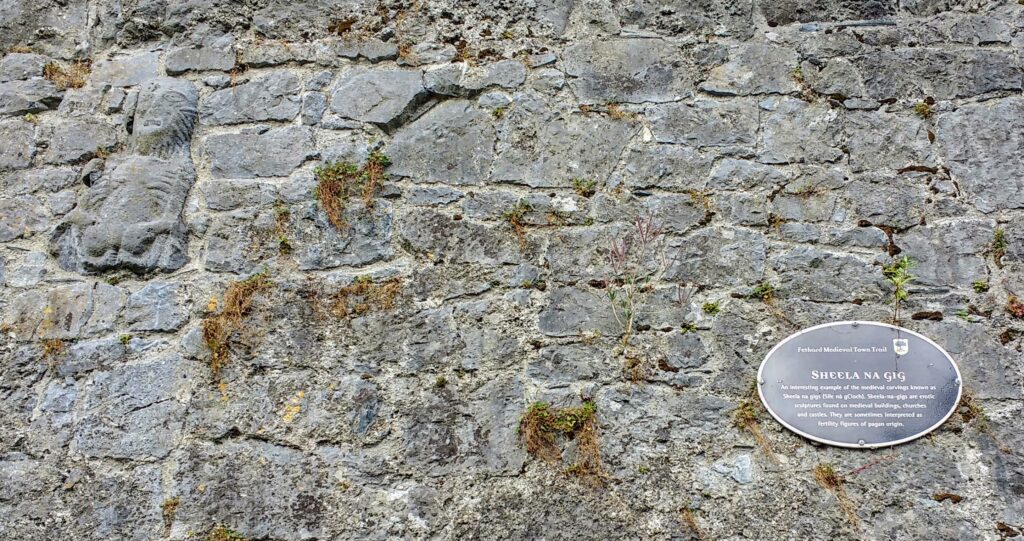
The oldest discovered in the UK dates back to the 12th century, the youngest to the 16th. Early theories from art historians claimed they were grotesque hag figures to warn against the sins of lust – a way of keeping the minds of churchgoers and monks pure. In early Greek literature, the female in this position was believed to scare demons away. These days researchers believe that the sheela is a pre-Christian folk goddess and the position she is carved in represents life-giving powers and fertility.
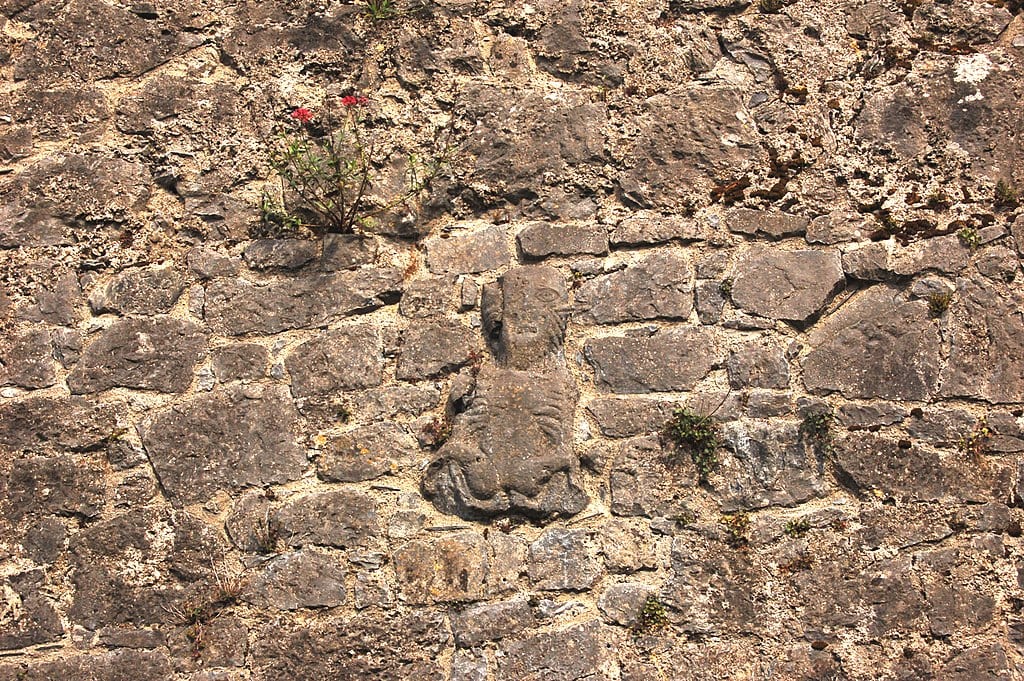
In Fethard you will find a large Sheela Na Gig near Watergate House embedded in the ancient walls. There are two more Sheelas, one at Kiltinian Castle, and one at the abbey.
Madam’s Bridge
Three-arch limestone road bridge over River Clashawley was built in 1770, and it incorporated the ancient medieval bridge. In or around 1840 the bridge was widened. Part of the gateway survives on the northeast side of the bridge.
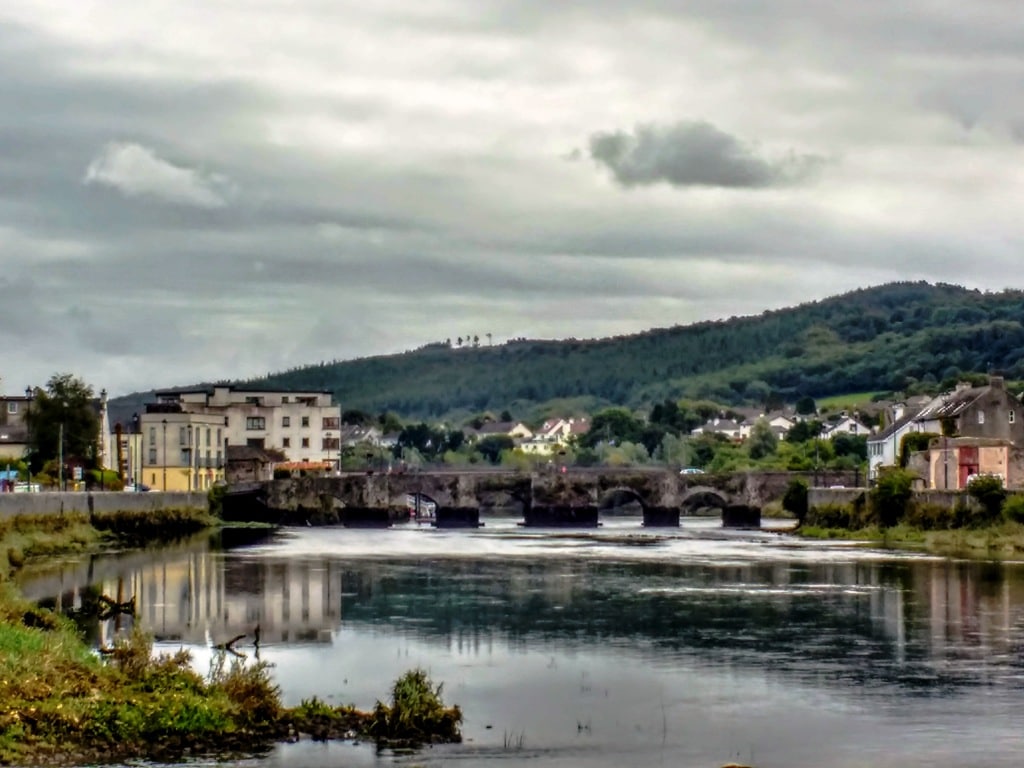
Edmond’s Castle
On the northeast side of Madam’s Bridge, you will see Edmond’s Castle. This is a late 15th-century fortified townhouse believed to have belonged to the prominent Fethard family, the Everards.
Incorporated into the medieval walls is a rare 15th-century hall house. It was built on a small plot of land next to the churchyard and is a three-storey house with dual orientation. The lower storey opens onto the street, the two upper storeys face the churchyard and the nearby church.
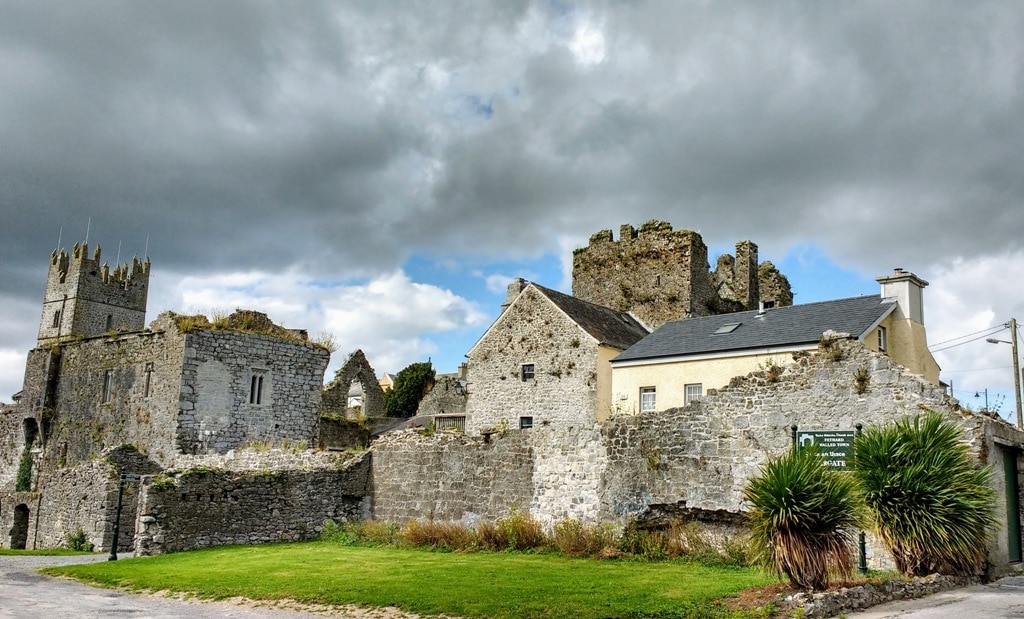
The upper storeys have the remains of a staircase from the outside on the ground floor. The lower storey had direct access to the churchyard and for this reason, the building could have been the priest’s house.
Holy Trinity Church
You can see the church towers above the walls of Fethard facing the North Gate and the River. The original Norman Church was built in the early 13th Century. The interior has a finely-crafted timber screen entrance, and at the east end a stained-glass window.
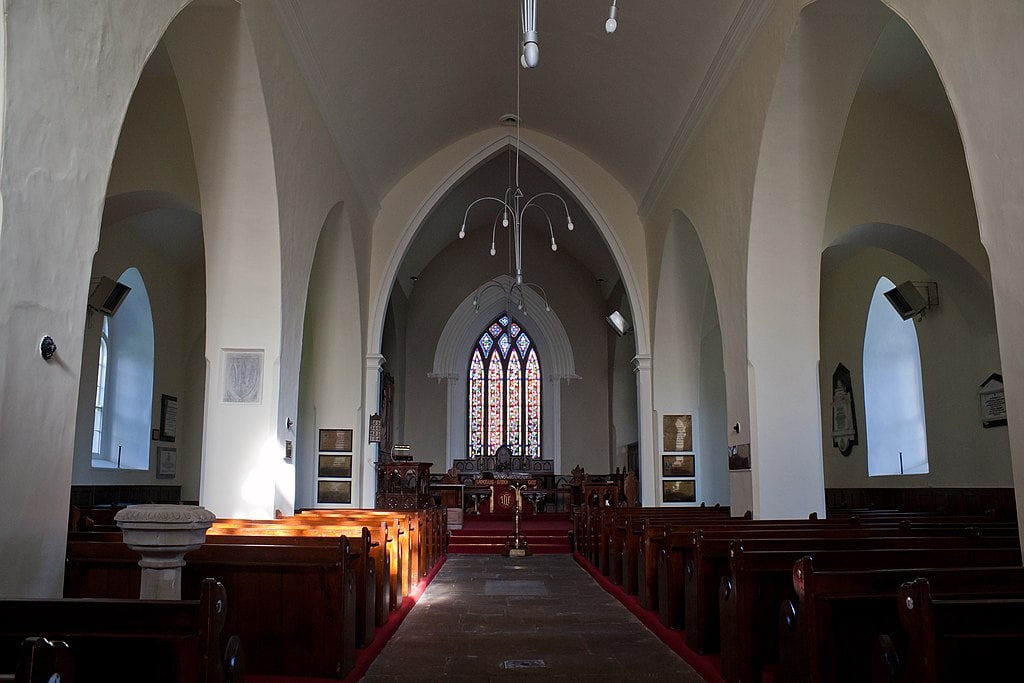
Its tall tower can be seen from all approach roads and its importance in the town is evident from the many former entrances from neighbouring late-medieval houses to the graveyard, giving important families in the town direct access to the church.
Court Castle
Court Castle is a 15th-century tower house located within the old town walls. It is believed to have belonged to the Hospital of St. John the Baptist a crusading order. It is one of the largest fortified townhouses in Ireland.
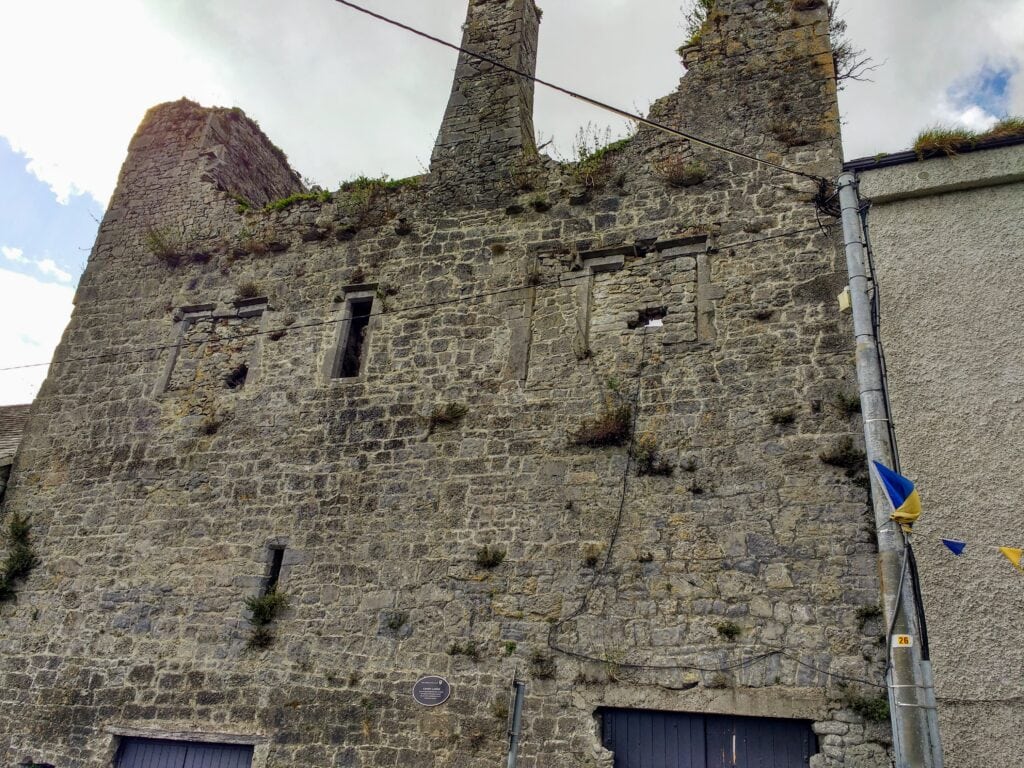
The last Prior of the Hospital was Thomas Everard who returned to Fethard and was granted the right to hold ‘Court Leet’. Everard may have held court in Fethard Castle twice annually and this is probably where the name Court Castle was derived.
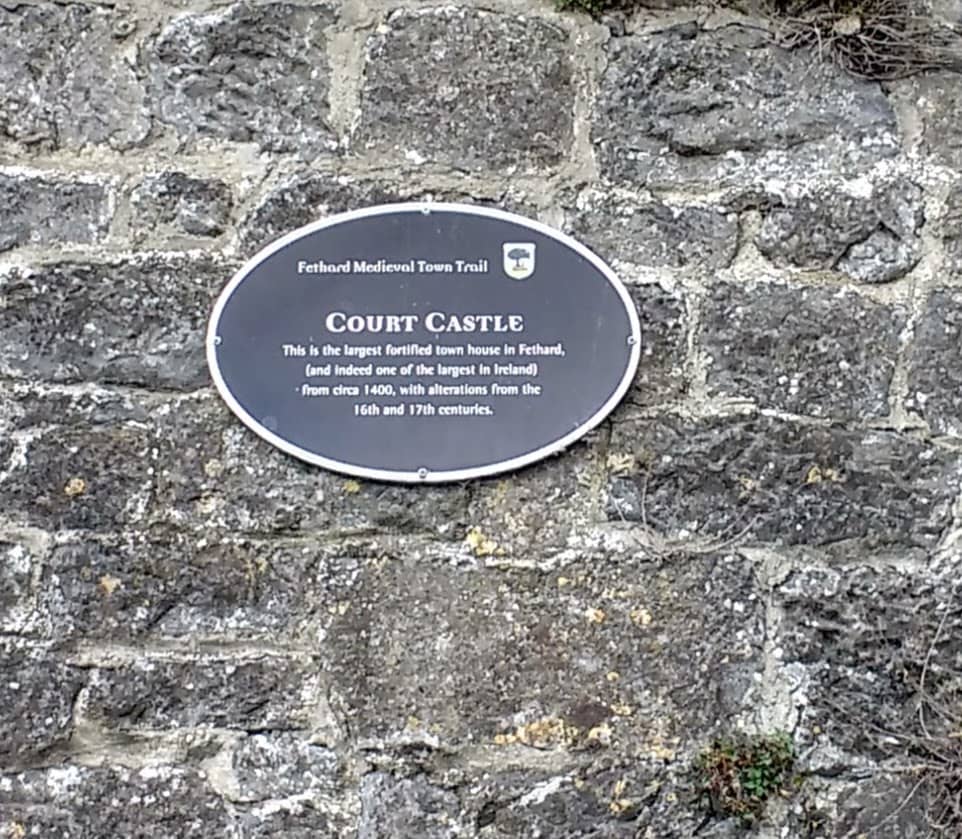
Town Hall
The Town Hall or “Tholsel” was built by the Everards in the 1600s as an almshouse for men. Sometime between 1763 and 1840 the building had become a town hall and courthouse.
The building is located on the north side of the Churchyard and traditionally this is where the almshouses were found. It is believed that the original building was part of the medieval hospital associated with the Court Castle hospitallers with the priory of St John, Newgate, Dublin.
North Gate – Sparagoleith
Originally there were 5 gates in the town walls of Fethard the North Gate is the only surviving gate. On the underside of the archway are markings left by the wickerwork which was used in its construction.
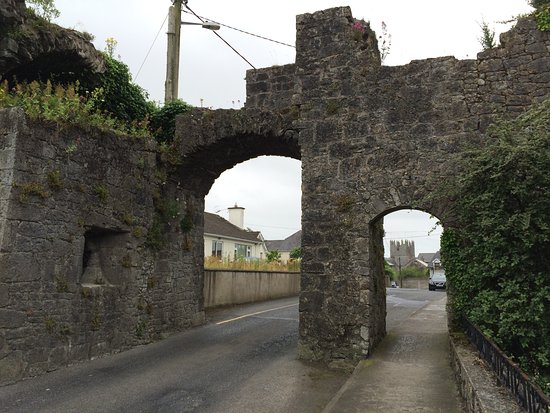
McCarthy’s Pub
If you want to visit a true Irish Pub and Undertakers you have to drop by McCarthy’s Pub. Established by Richard McCarthy in the 1840’s McCarthy’s Hotel provided the services of a spirit merchant, restaurant, hotel, undertaker, draper, grocer, baker, hackney service, glass, delph and china shop and if you still couldn’t get what you want – hire a few horses to take you elsewhere. Continuing in this tradition the present proprietor, Vincent Murphy (Jasper) fifth generation, has a pub, restaurant and undertaker business which he runs with his family.
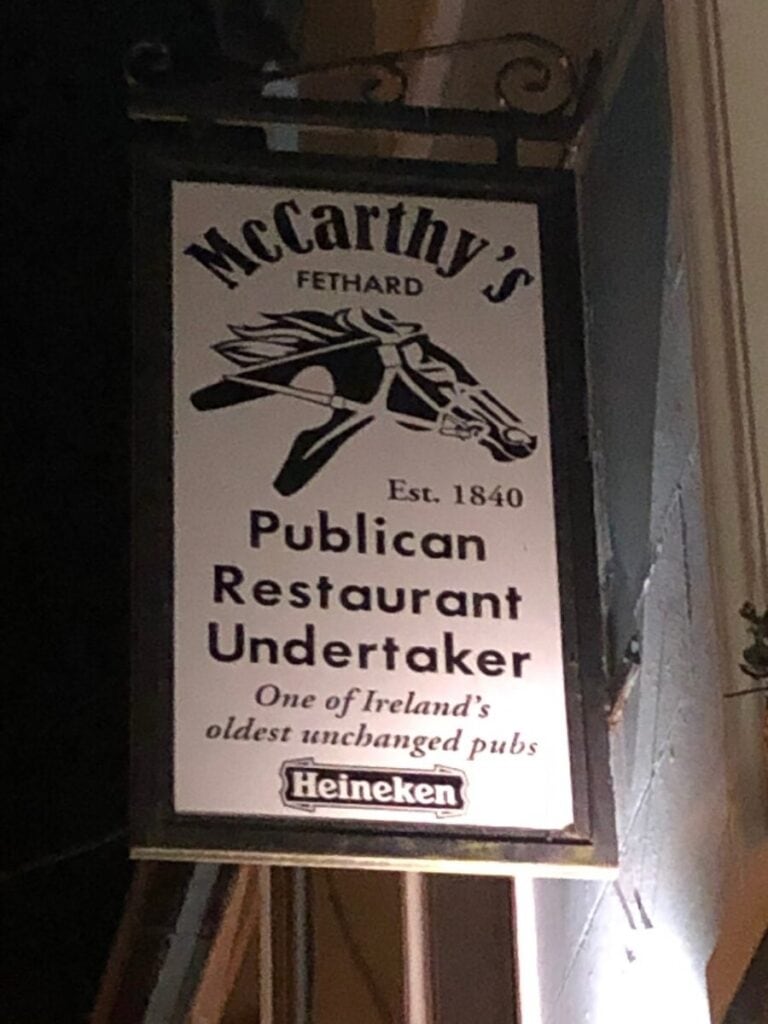
They have all the beer brands on tap, and the only beer produced in Co Tipperary on tap as well, from the White Gypsy Brewery in Templemore.
Fethard Horse Country Experience
Fethard Horse Country Experience is a state-of-the-art interactive exhibition housed within the Tholsel building where visitors can explore the story of the horse and its role in Irish culture for over 2000 years. Part of Ireland’s Ancient East, this interactive experience examines the relationship between the people, the land and the horse revealing how they are all inextricably linked.
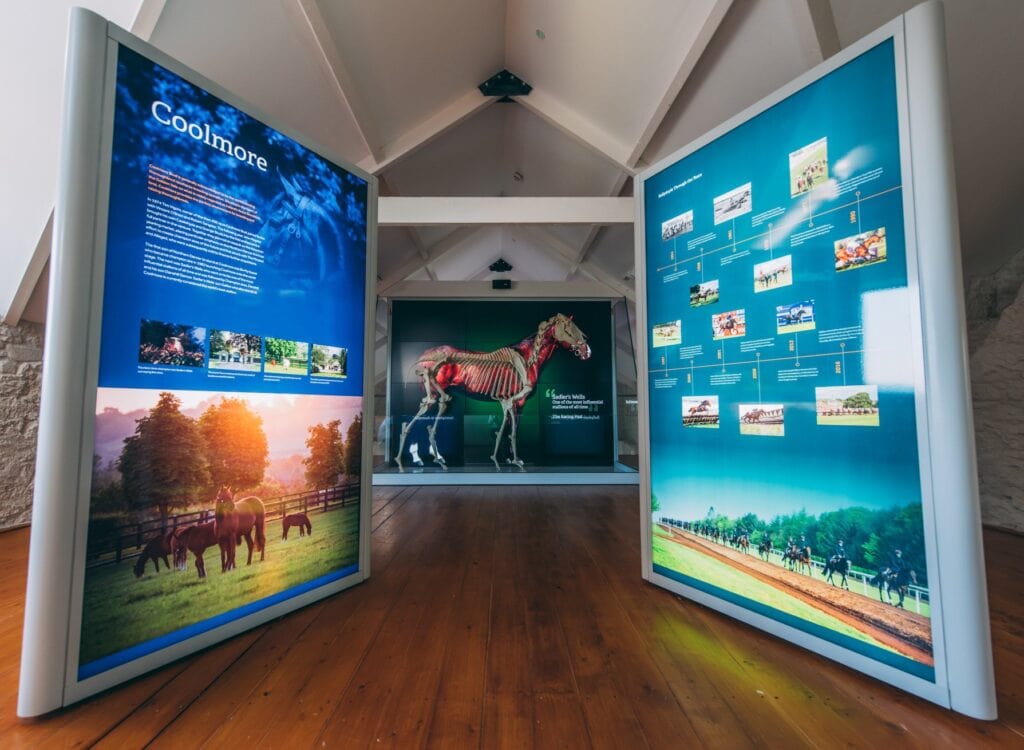
Fethard Folk Farm and Transport Museum
The Fethard Folk Farm and Transport Museum is housed in the former Fethard railway station, near the historic town walls of Fethard, in County Tipperary. It specialises in transport items but also contains thousands of exhibits from folk and farm life.
The grounds include a café, picnic facilities, toilets, provision for the disabled, a well-equipped playground and ample free parking.
One of the best tips I can give you about travelling to Ireland is to rent a car and let yourself get lost, not to mention it’s not a long long way to Tipperary.
You might also like to read
Swiss Cottage Ireland – Ireland’s cottage orné a hidden gem
Grey Abbey an evocative ruin in County Down Ireland
Holy Cross Abbey Ireland sacred place of True Cross Relics
Essential guide to renting a car in Ireland
35 of the most beautiful towns & villages in Ireland
Ireland’s Ancient East – an epic road trip
Medieval Ireland – the Crusaders in Limerick
Pin it to save it
